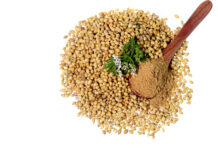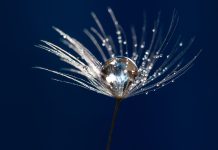MS, LYME DISEASE, OR MERCURY POISONING?
The picture becomes more confused when other avenues for producing similar symptoms to MS are taken into consideration.
Lyme disease is a condition that is generally transmitted via a spirochete (spiral bacterium) found on a tick. One obvious sign of infection is a rash that appears in a ring around the bite location, although avoiding this rash provides no certainty that one is Lyme-free. Despite health authorities rejecting the idea that Lyme disease exists in Australia, in the face of increasing evidence the ground is starting to shift. Similar symptoms to MS include weakness, pain, and cognitive problems.
Neurological effects of mercury exposure were well known among hat-makers, who once used mercury in the treatment of felt, leading to the saying “mad as a hatterâ€. A 2011 study showed that MS patients had 7.5-fold higher levels of mercury in their cerebrospinal fluid than controls, indicating a link. The primary source of exposure for many people is via amalgam fillings that are roughly 50 per cent mercury.
The notion that MS can be reversed by simply having amalgam fillings replaced with composites (using a safety protocol, and in conjunction with a detoxification program) is rejected by the medical mainstream, yet many people who take this step continue to report a marked relief of their symptoms.
Woodrow Monte is an American PhD scientist who studied the artificial sweetener aspartame (951, NutraSweet, Equal) in the early 1980s.
In his book While Science Sleeps, he links the brain myelin destruction found in MS patients to aspartame, claiming it creates methanol that crosses blood-brain barrier, where it turns into formaldehyde.
A further claim is that monosodium glutamate (MSG, E621) can be a cause of MS symptoms. Proven harmful to brain neurons, it is commonly hidden in a range of ingredients such as hydrolysed vegetable protein, textured vegetable protein and autolysed yeast.
NATURAL PREVENTION AND TREATMENT
‘Black seed (black cumin, Nigella sativa) is usually taken as oil, and… some users claim improvements’
The incidence of MS increases markedly from tropical to temperate zones, and the only plausible explanation is the immune-boosting effect of vitamin D from sunlight.
Health commentator Joseph Mercola recommends getting sufficient daily sun exposure over most of the body for it to turn the palest shade of pink. Where there is little sun, it is beneficial to take a vitamin D3 supplement, ideally with K2. When pregnant, higher vitamin D levels minimise the risk of the baby developing MS later in life. Another separate risk factor is smoking.
About 50 per cent of MS sufferers try naturopathic approaches. Many with the condition are reporting benefits from a range of natural substances, off-patent drugs, treatments and therapies. It is worth applying a modicum of scepticism, while bearing in mind that the numerous unorthodox MS therapies have at least one web page trying to debunk them.
Overcoming Multiple Sclerosis is a group whose web site contains much helpful information about natural interventions, including diet, sunlight, meditation, exercise, and issues surrounding medication. It makes the point that it is independent of industry funding.
In terms of managing MS symptoms, sufferers have reported pain relief benefits from medical marijuana (which is still illegal throughout Australia), massage and acupuncture. Relatively low-saturated fat diets are generally recommended, and foods with trans-fats such as margarine, biscuits and chips are believed to worsen symptoms. Control of MS can be achieved through avoiding allergens such as food, tobacco smoke, and house dust.
SUPPLEMENTS LIST
Below is a list some of the supplements and other substances that are being used for MS with some positive reports:
Fish oil may repair myelin and slow down disease progression.
Gingko biloba and ginseng are used to relieve brain fog, and seem to work well when combined.
Vitamin B12 is often injected rather than swallowed, and many people are finding it helpful in relieving fatigue.
Vitamin D3 (taken with K2) may slow down progression.
Turmeric (fresh or powdered) is a strong anti-inflammatory that is attracting rave feedback.
Magnesium levels are often deficient in people with MS. Taking it as a supplement may reduce the rate of relapses.
Histamine can either be injected or applied via transdermal patch.
Black seed (black cumin, Nigella sativa) is usually taken as oil, and some users recommend having it with freshly squeezed orange juice. As an immune stimulant believed to raise natural interferon production, some users are claiming dramatic improvements.
Colostrum is derived from a bovine source and is taken as a tablet. The first milking colostrum collected just after the birth of the calf is recommended for maximising peptide content. It is claimed to boost stem cell production.
Cayenne is considered to increase circulation and relieve numbness, and is often taken in capsule form or as a spice.
Adaptrin (Padma 28) is a Tibetan mixture of 22 herbs developed in the late 19th century. It received scientific endorsement in 1992, when a study involving a hundred people with MS found that 44 per cent experienced clinical improvement.
MMS (Miracle Mineral Solution) is a dangerous product in the eyes of the authorities. This is a dilution of sodium chlorite in distilled water that turns into chlorine dioxide in the presence of an acid, and is very effective at killing pathogens.
Added to water by measured drops, it is considered by government bodies to be harmful at the highly diluted recommended dose. A community of people tackling MS takes a different view.
Low-dose naltrexone (LDN) involves a pharmaceutical whose patent has run out. Taken over the long term, many people are reporting improvements, with few side effects. LDN has its own information website that has no economic relationship with the drug’s manufacturers.
MS THERAPIES – PAOLO ZAMBONI
Paolo Zamboni is an Italian who in 1995 was working as a professor of medicine when his wife Elena was diagnosed with MS. In a labour of love, he set to work looking for a solution, scouring old medical textbooks, and eventually concluded that excess iron was leading to a narrowing of veins in the neck and head that was later named chronic cerebrospinal venous insufficiency (CCSVI.) This research later paid off when he cured Elena’s MS via a vein-widening operation.
Despite a large number of people who feel that their lives have been transformed by the operation, neurologists vigorously attack Zamboni’s therapy, and the media has given it negative coverage in recent years.
Within Australia, in Newcastle, Dr Paul Thibault carries out this procedure. Dr Thibault claims that about two thirds of his patients have experienced some benefit. He has been struck off Medicare and banned from operating in public hospitals, so he carries out the procedure privately. Costing thousands of dollars, it is out of reach of many budgets.
CHLAMYDIA PNEUMONIAE
In a story that is remarkably similar to Zamboni’s, Dr David Wheldon has a scientific background as a British expert in infectious diseases. Dr Wheldon is also an author and poet. When his artist wife Sarah was diagnosed with MS in her 20s, he began intensive research, narrowing the cause down to Chlamydophila pneumoniae, a respiratory microbe spread by coughing and sneezing. Although most people are infected with it, the problems only start when it begins attacking the body.
‘… neuromuscular electrical stimulation… involves rebuilding connections between the brain and muscles’
Dr Wheldon’s next challenge was eradication of the microbe. It is extremely difficult to kill, so he devised a Chlamydophila pneumoniae treatment protocol. This treatment was carried out for 12 months and involved a combination of three different antibiotics, together with several antioxidants, vitamins and minerals. On the regime, Sarah’s lesions disappeared within months, and today she is MS-free instead of living in a nursing home. Dr Wheldon provides details of his treatment free, and understandably offers no guarantees. Dr Thibault has created another modified protocol of his own.
Dr Wheldon’s and Zamboni’s conclusions are not mutually exclusive, because Chlamydophila pneumoniae is known to affect veins.
TERRY WAHLS (MD)
When American clinical professor of medicine Terry Wahls was diagnosed with MS, she was forced outside of her medical paradigm in her determination to beat the disease. Using natural techniques, she reversed her MS and today she no longer uses a wheelchair.
She feels that the most benefit was gained by dietary changes, involving a shift to a low carbohydrate Paleo diet, together with functional medicine (a medical system where genetic, environmental, and lifestyle factors are all considered). She also made use of neuromuscular electrical stimulation, a therapy that involves rebuilding connections between the brain and muscles.
HYPERBARIC OXYGEN THERAPY (HBOT)
Hyperbaric oxygen units are well known as a treatment for “the bendsâ€, a diving decompression sickness linked to excess of nitrogen in the blood. The therapy involves breathing in 100 per cent oxygen inside a special chamber.
While the mainstream view is that HBOT offers negligible benefit for MS, people with the condition continue to report improvements, believing that it works by reducing inflammation. Indeed, in the UK it has been used by thousands of people, at 60 private treatment centres dotted around the country.
RAISING HOPES
National MS societies and neurologists tend to be the most active defenders of orthodoxy when approaching this disease. When confronted which what could be important breakthroughs, their responses are cautious and lukewarm. In the neurologists’ view, raising the prospect of possible cures is irresponsible, as this raises the hopes of people with MS. Instead, neurologists tend to see MS as a life sentence.
In most cases, the strongest arguments against trying supplements or unconventional therapies are the modest cost involved, and a lack of firm scientific evidence that they work. As for scientific testing, this is expensive, and unpatented supplements or pharmaceuticals are generally insufficiently profitable to enable a manufacturer to put up the funding.
When the alternative is to become progressively debilitated and eventually lose one’s independence, it is no surprise that many MS sufferers are taking a dismissive attitude to this conservatism.
RESOURCES
David Wheldon
www.davidwheldon.co.uk/ms-treatment.html
CCSVI Australia
Multiple Sclerosis Network of Care Australia
Terry Wahls
Overcoming Multiple Sclerosis
www.overcomingmultiplesclerosis.org
Low Dose Naltrexone
Martin Oliver is a writer and researcher based at Lismore, Northern NSW.








































